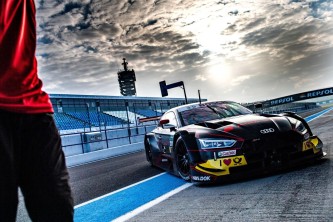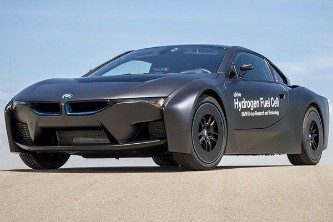gasoline cutting torch
Artikel Terkait gasoline cutting torch

VW owners in China facing clogged particulate filter problem because they don’t drive fast enough
Volkswagen owners in China are reporting clogged gasoline particulate filter (GPF) which results in high
6 reasons why cars catch on fire, and how to avoid them
A: Brand new cars should not have this issue, but always pay attention to the strong smell of gasoline
Bridgestone Potenza Adrenalin RE004 - suitable for which car? Find out here
tyres with the launch of the Potenza Adrenalin RE004.The RE004 is developed with Bridgestone’s cutting-edge
All-new 2020 Kia Sorento - 35 mm longer wheelbase, new 8-DCT, 227 hp/350 Nm hybrid, PHEV next
This comprise of a 1.6-litre T-GDi (turbocharged gasoline direct injection) engine paired to a 59 horsepower
Mazda rotary engine is back, but it won't be in a sports car...
that adopted a 330-cc single-rotor rotary engine with 30 PS driving a generator fuelled by a 9-litre gasoline
More Mitsubishi hybrids planned for ASEAN, Xpander Hybrid by 2023
line-ups.Malaysian-spec Mitsubishi Xpander.Aside from the plug-in Outlander, Mitsubishi will launch a conventional gasoline-electric
Why are there so many potholes in Malaysia?
And the answer comes up to two main reasons – overloaded vehicles and cutting corners.1.
Kia debuts Kia Stinger facelift; New ADAS, 304 PS, 422 Nm
The performance sedan will still be powered by an updated Lambda 3.3-litre T-GDi (turbocharged gasoline
Mobil has a new engine oil that will protect your turbocharged engines
as follows: 0W-20 is most suitable for Toyota, Honda, Nissan, Hybrid and other newer ECO Japanese gasoline
0-100 km/h in 6 seconds, the new Toyota RAV4 PHEV is the ultimate sleeper
does it in 5.9 seconds), the RAV4 is also equipped with Toyota’s E-Four electric 4WD system.The gasoline
New Peugeot 3008 facelift debuts with 520 Nm, double the torque of Honda City RS
Active Pack”, and “GT Pack”.Powertrain HighlightsThe updated 3008 is available with a gasoline
This new machine fixes a pothole in just 8 minutes! Perfect solution for Malaysia?
to the many potholes we have in Malaysia.The machine is a tractor that is capable of three things: Cutting
2020 Proton X50 - Confused with the features names? We explain the ABCs
TGDi is Turbocharged Gasoline (petrol) Direct Injection.
Watch out Civic, Hyundai Malaysia teases 2021 Hyundai Elantra
coming to our shores soon.Worldwide, the Elantra/Avante is available with several drivetrain options (gasoline
Man pulled over for duct-taping flashlights to his car as headlights replacement
But we have not heard of a case where the owner duct-taped torch lights onto the car!
Check out Mercedes-Benz Malaysia’s elaborate CNY video!
Every piece of paper cutting that made up the red world in the video was meticulously hand-crafted from
Volkswagen T-Cross Coupe Will Be Unveiled!
rear passengers.As for the power, the new-gen T-cross Coupe will continue the use of 1.0 and 1.5 TSI gasoline
Now you can live and breathe JDM with Bride face masks
do their bit to help fight the pandemic.Called the BR3D Mask, this mask uses the same technology for cutting
What’s so special about Mazda SkyActiv engines anyway?
The”G” denotes gasoline while the “D” denotes diesel.
Daimler confirms engine partnership with Geely, to include Proton and Volvo Cars
Both groups will use global R&D networks to work together on a next-generation gasoline engine specified
Review Post gasoline cutting torch
#CambMA Rescue 1 has been issued a Petrogen Cutting Torch purchased thru UASI funds. Petrogen is gasoline vapors w pressurized oxygen. https://t.co/dkVKciUXQt
SUPACUT PRO DUAL Torch Oxy Gasoline Cutting BIG SAVINGS Vs Acetylene! Cut 12" https://t.co/0RjhwjrHXy eBay
Oxy-Gasoline Cutting Torch for SELL: We use oxygen and gasoline as fuel to instead the propane or acetylene for.. http://bit.ly/1fH4jM
Got me a new bad ass tool for the shop. Gasoline cutting torch. These cars stand no chance now! Cuts like a plasma cutter.
@ZenomeTV @ADemocratTrump @WhiteHouse I have wire cutters, a cordless cutting blade, and a gasoline cutting torch, not to mention the obvious shovel, ladders, etc. A wall is primitive technologies are much better suited for this project. trump just wants to have a giant object to make his penis seem bigger.
Feb 20, Cutting-torch, gas-, gasoline-, arc-, plasma- and laser-cutting. http://t.co/R3yHzP2UwK
@jerusalemofiron It kinda reminded me a friend's shop . he had just got done useing a cutting torch. Then hung it up over a vat of gear cutting oil thinned out with gasoline. To say it made me a little on edge would be a under state ment. I can only imagine how thay store munitions and ordnance.
51 -- Cutting Torch Systems; Oxygen-Acetylene, Oxygen-Gasoline, or Exothermic Systems That Emergency Responders.. http://bit.ly/62zI9p
A rural Knoxville area man was injured seriously in an accident with a cutting torch and gasoline… https://t.co/tvvsOeZ45k #IowaCity #Iowa
That cutting torch n gasoline type o anger.
Review Q&A gasoline cutting torch
Why are gun enthusiasts so quick to dismiss the need for stricter guns laws in light of the many mass shootings in recent history?
Here is the simplest answer: Stricter laws WILL NOT HELP. now think logically: MURDER is one of the most SERIOUS crimes in existence. If someone is committing a Mass shooting they are ALREADY BREAKING THE LAW. if the killer cared about the law they would not be breaking it already, ergo additional laws have no effect on the shooter. If I am going to commit murder I will not be stopped by any laws. I have already decided to break the law. If you think guns will all “go away” and people will be safe, look at the UK with knife and acid attacks, and France where people are run over by trucks. Killers will choose any method they can use to kill. This could be a car. A large stick. Chemicals (gasoline, rat poisons), tools (hey let's use a CUTTING TORCH on the LION CAGE at the ZOO)…. ANYTHING can be used. The problem is not the tool. It is the person. And the fact you need to COME TO TERMS WITH ACTUAL REALITY. The uncomfortable truth is the that no one IS and NEVER HAS been 100% safe. Mayberry (Andy Griffith show) does not exist. Some mythical past where everyone could leave doors unlocked in all places never existed.
Is black gunpowder stronger than smokeless gunpowder?
No. Black powder is a very low yield explosive. It burns at the same rate whether it is confined in the chamber of a firearm and ignited or poured out on the ground and ignited. When it burns, a relatively small percentage of it is converted to hot, expanding gas and a great deal of it is left behind as smoke and soot. Smokeless powder, on the other hand, is an entirely different animal. Poured out on the ground and ignited, it burns about like tissue paper, consuming itself slowly with quite a bit of smoke and ash left. If a good sized pile of it is ignited in the open it will begin to burn faster until it vanishes suddenly with a noisy woof! sound, but it won’t actually explode. Loaded into a cartridge and fired in the chamber of gun, smokeless powder behaves completely differently. When it is ignited by the cartridges primer, the powder burns almost instantaneously, and under ideal conditions the entire charge is converted into the hot gases that propel the bullet down the barrel and out the muzzle, making the accompanying loud bang and leaving behind little or no smoke or ash. Note that even though the muzzle blast sounds like an explosion, it actually is not. The smokeless powder burns very, very fast when confined, but it does not explode. It is for this reason that smokeless powder can be shipped by almost any carrier, almost anywhere. It is far safer to handle than gasoline and requires almost no special handling. Smokeless powder behaves this way because of the way it propagates combustion. Ignited in the open, it burns slowly because it reaches a certain temperature and gets no hotter, and because it’s pressure does not increase. In the confines of a firearms chamber, however, the first tiny spark of burning powder increases the temperature and pressure dramatically. The increased temperature and pressure cause the powder to burn faster, which increases the temperature and pressure further, and the cycle continues progressively until, in a tiny fraction of a second, the projectile is driven down the barrel. The pressures and temperatures achieved in modern sporting arms can be astounding; a high powered rifle can reach chamber pressures exceeding 70,000 pounds per square inch, with temperatures far hotter than the flame of a cutting torch! It is for this reason that there can be absolutely no obstruction in the bore. Anything that impedes the bullets passage, even slightly, will cause a dramatic spike in chamber pressure, and the excessive pressure will find a different escape route. This will ruin not only the shooters day, but also that of any bystanders!
In auto mechanics, what kind of auto shop would allow a car to drive over a special platform where a mechanic could climb down some steps to peer underneath the vehicle, and what is that setup called?
To add to the other answers: Inspection pits have fallen out of favor compared to lifts because they have some dangers and disadvantages. A lift can be used on the vehicle’s frame, leaving the suspension unsupported, making it easier to work on suspension components. A pit cannot do that, unless it’s equipped with pit jacks. In a pit, it can even be difficult to change an exhaust pipe. The pit can accumulate toxic gasses and fuel vapors. A pit full of gasoline vapors can be ignited when a cutting torch or grinder is used. A pit full of carbon monoxide can suffocate someone working in it. Depending on the water table, they have a tendency to flood. That’s why they tend to be used only with heavy equipment and trains that are difficult to lift.
What causes a barrel to explode?
Usually when somebody does something stupid with a barrel that has been used to store gasoline or oil, or other highly flammable materials. For example cutting into a 55 gallon barrel with a cutting torch or an electric saw. ,Barrel Explosion Kills Welder
Why doesn't the U.S. Military provide kill switches on humvees, tanks, etc. left in Iraq?
Because it would be easier to manually disable a vehicle than install a fool-proof kill switch. There are lots of was to disable vehicles, with a few of the most fun ones listed below. Cut all the electrical wires you can find with a knife or pair of wire cutters. Pour gasoline into the engine compartment and set it aflame. Using a cutting torch, go ham on the engine block or driveline components. Pour water into the gas tank and run the engine. The ultimate solution is to drain the engine oil, pour in sodium silicate, and run the engine for a couple minutes. When heated, the silicate forms a glass on any parts lubricated by engine oil, and seizes the engine. The best part of the deal? It's only around $5 for an engine-killing dose.
Were people likely ever trapped in the hull of large sunken ships?
Navy divers who finally inspected the sunken hull of the battleship USS West Virginia after the Pearl Harbor attack found the bodies of three sailors. These sailors had survived 16 days—keeping a calendar—in a storeroom before dying of asphyxiation. Their names were Ronald Endicott, Clifford Olds, and Louis Costin. For several days after the attacks, sailors and soldiers were afraid to take guard duty near the sunken ship, due to the occasional tapping noises made by men trapped below. Rescue was for the most part impossible, due to the risk of sudden flooding if a hull was cut open, plus the large amount of fuel oil and gasoline that would flare up if cutting torches were used on the surface.
Ballistics: Is it possible for a bullet to puncture a gas tank without causing it to explode?
Along the same lines as the other answers, in firefighting class they showed us an oxy-acetylene tank set where the lighted cutting torch was hang over the acetylene tank and allow to burn through. The tank violently ruptured but did not burn. The force of the escaping gas snuffed out the flame. To get a flaming explosion they had to set up a second flame far enough away to not only be snuffed out but to have the expanding gasses slow enough to have the right air to gas mix to ignite. Even if you put a pipe bomb inside a tank of gasoline and detonate it, it won't ignite the gas. To get an ignition you need to wrap the pipe bomb with steel wool that will super heat in the explosion and hold that heat until it travels far enough from ground zero to have the right air to gas mix for a burn to occur.
Does using an oxyacetylene cutter to heat mild steel damage the metal since the steel will react with the oxygen when heated?
Yes. But not in a matter that anyone using one knowledgeably will care about. What happens with an oxy/fuel (acetylene, propane, hydrogen- some can even use gasoline!) cutting torch is that once the preheat is achieved, the oxygen does the real cutting work by actually burning through the metal. This makes a slag that mostly drops out the back side of the cut, blown out by the force of the oxygen jets. The faces that are left will have an oxide layer on the surface, but it won’t be very thick; there is no chemical interaction with the base metal more than a few thousandths of an inch past the edge of the cut. In most cases the distortion and annealing from the heat of the cut will have a far greater effect on the nearby metal, and since flame cut parts almost always have a follow up finish grind or similar process the affected material will be removed and discarded anyways.
What would knights look like today, assuming firearms had never been invented?
According to the 1982 documentary, “Knight Rider”, they’d look like David Hasselhoff. Seriously, the other answers so far have been on the mark. I’m tailoring this answer to be more speculative, visual, and fun. The trick to this question is what we assume about weapons development. If guns weren’t invented, something else would have been. As long as the world’s armies continued to use armor, they would keep looking for ways to defeat it — and the armorers would keep looking for ways to stop those new weapons. I’m going to assume that the main combat weapons continue to be hand weapons like swords, maces, spears, and crossbows, which means the knight has to have free use of his arms and hands. So let’s say for some reason, gunpowder, rockets, and explosives in general just don’t work, but everything else we’ve invented still does. How would I stop an armored knight today? Chemicals. Pepper spray through the visor would still disable him. Mustard gas or nerve gas would still work. Spray him head to toe with Super Glue until his joints lock up. Response: Armor would have to include chemical protection; enclosed face mask, gas filtration system, and a total body seal against gas. That will make the armor incredibly hot, so some kind of cooling system would be next. Channels inside the armor for forced air or water cooling and a powered chiller unit. An outer Teflon layer could defeat the glue. Fire. Armor will give you some very temporary protection from fire, but even if it’s fireproof you’ll quickly cook inside it. Maybe an insulating blanket or a layer of thermal tiles like the Space Shuttle used, combined with an air tank and sealed mask, could keep armor viable in the face of flamethrowers. Heavy projectiles. A great big rock will still crush armor. So would a tank. I’m pretty sure that even the best quality armor can’t resist the strongest crossbow we could build today. The crossbow might be so heavy that it’s a crew-served weapon, practically a ballista. Against penetrating weapons like this, kevlar and other ballistic fibers aren’t good protection, and you can only make steel so thick before the knight can’t carry it. Pole arms. Bills and hooks and the like always gave even unskilled soldiers a chance to dismount and trip a knight, rendering him fairly helpless. Even a strong net could do the job. Smooth, curvy armor would be more difficult to grasp. Unarmored rabble carrying these weapons would be faster and more agile than armored knights, so knights would have to carry missile weapons to keep them at bay. All in all, none of this sounds practical. All these evolutions make armor bulkier and heavier, so we’d quickly reach the point that a man can’t carry it. Knights would train hard to carry the maximum weight. So to picture a line of modern knights, start off with an NFL offensive line - a bunch of 250-pound guys built like gorillas. Now wrap them in a smooth metal/ceramic/fiber carapace that conceals several inches of shock-absorbing, insulating material, cooling tubes, breathing tanks, and batteries. Their helmet would look like a steel moto-cross helmet, fully sealed and connected to a breathing air system. Since you have a full face visor, it might as well include night vision equipment and a HUD connected via radio network to central command, plus a camera to send images back. (Like “Aliens”). The overall effect would be something like this, but fatter and rounder: Which is to say, I think Batman and the Warhammer 40k Imperial Marines got it about right. I imagine the smooth areas as metal-faced with carbon-fiber backing, over a thick insulating/services layer. The joints would be ballistic fiber and/or metal mesh over insulation. Not seen is his backpack for battery power, cooling, and breathing air. The cape would be fireproof and serve as a heat shield. Even this level of armoring is only practical if the stuff is very low-density, and the actual armored layer would be just enough to turn the common missile weapons and swords. Not nearly as tough as it looks, in other words, but with unseen resistance to heat, chemicals, etc. It you want it to be *really* strongly armored, you’d need to invent a powered exoskeleton of the sort often imagined in SF novels as a chassis to mount heavy armored plates, a power source, and infrastructure: Let’s assume that the need for armored infantry caused us to research this technology much sooner, so it’s practical today instead of experimental. Now we’ve basically made a man-shaped tank, a fighting vehicle that needs the classic triad: powerplant, weapons system, and protection. We face the problem tank designers face: improving any of these characteristics means you need a bigger, heavier tank, or you have to sacrifice one of the others. The rig pictured above is powered by an electric umbilical cable, no good for combat. In reality he’ll need a backpack carrying an electric generator with a gasoline engine to run it, or a massive battery pack. Let’s assume batteries, because then we don’t need to worry about air for the engine and we can be amphibious. That added weight requires more power, so scale the whole suit up 10–20 percent. Now we need armor, and that’s going to double or treble the weight, so we need a bigger powerplant. And then we need some kind of weapons powerful enough to justify all this expense, which is still more weight. My hunch/WAG is that the minimum size for a one-man suit would be at least ten feet tall. So now the knight starts to look like a Battletech ‘mech, or the alien gizmo from District 9: Except instead of a blaster, it’s got a sword in one arm, a mace in the other, and a pair of self-loading crossbows on the shoulders. It would also carry flamethrowers and possibly, gas grenades. And heck, you might as well carry a big shield, too. But there’s nothing holy about being man-shaped. Instead of using bipedal locomotion, we could build a quadruped suit that the knight rides like a horse, like this: By the time you add armor and a powerplant, expect this thing to be nearly as large as a horse, though it might be squatter. The rider’s suit would merge with the mount’s armor at her hips, so she doesn’t need heavy armor for her legs because they’d be within the mount’s carapace. (But then, when she dismounts they’ll be less protected.) That means you can put twice as much weight into her upper armor and she can still carry the suit after dismounting. At some point we get back weapons. Do we really need swords and hand-weapons? Those force us to use complex arm mechanism that are expensive to armor and easy to damage. Maybe we switch to robotic arms with hydraulic punches, trip-hammers, or steel-cutting rotary saws (take a cue here from Robot Wars), or flamethrowers, or cutting torches, which can be operated remotely on a simple robot arm. Then we could seal the knight completely inside a compact vehicle and we could carry much better armor. A crossbow could still be fired through a port. You’d wind up with something more like this (a neo-WWI knight): Then of course, to defeat these you’d build bigger tanks that can carry a *really* heavy crossbow, with a driver and two gunners to man the crossbow. So we’d still end up with tanks, with bows instead of guns.
What would happen if I injected a small flow of pure oxygen into my car’s air intake?
Increasing the oxygen content of an intake airflow lowers the combustion point, meaning it will cause premature detonation, out of sync with the expected and carefully timed ignition in the injection and compression system, which will cause all sorts of mayhem such as rough idling, pinging, possible damage to the pistons, cylinders, and crankshaft. It would definitely cause the on-board computer to throw codes and turn on the check engine light. If one could adjust the fuel and timing to account for the change, the second effect would be a run away heat problem as a purer ratio of oxygen burns much hotter. In fact, they make metal welding /cutting torches that use oxygen and gasoline, so essentially it could melt parts of the engine, and the expansion and pressure in the block would probably cause the head gaskets to rupture. A small flow, as opposed to a large one, would produce the above mentioned effects to a smaller degree. Hopefully this is a little more informative than the other answers.
 Beranda
Beranda 


